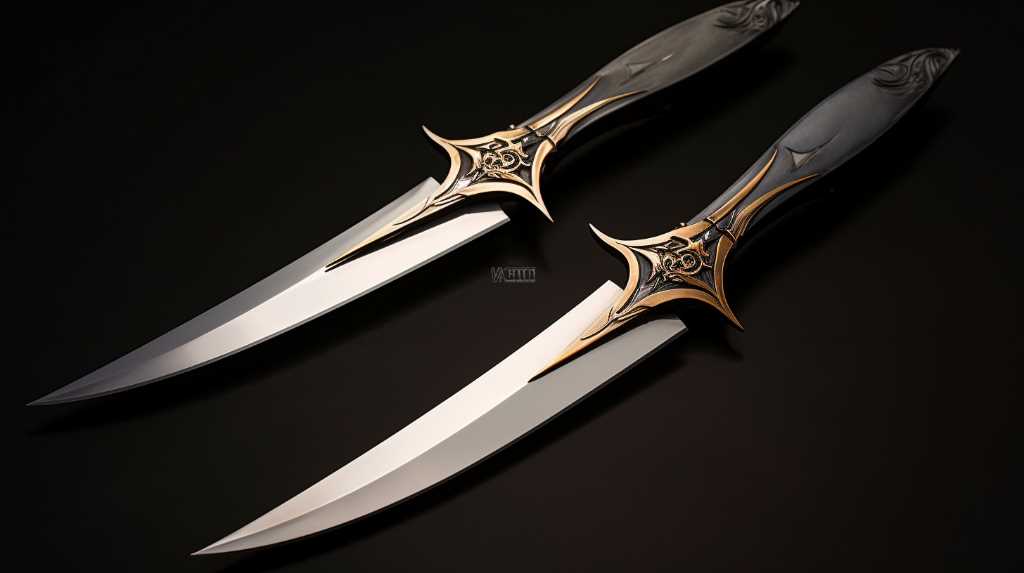
In the world of precision and finesse, where every throw counts, maintaining the edge on throwing knives becomes paramount. Like a hidden art, this skill demands expert knowledge and meticulous attention to detail.
With regular honing techniques, effective sharpening stones, and the strategic use of ceramic rods, we unlock the secrets to achieving the perfect edge.
Join us on this journey of liberation, as we delve into the technical aspects of knife maintenance and explore the importance of angle guides.
Prepare to elevate your throwing game to new heights.
Key Takeaways
- Regular honing every two to three weeks is crucial for maintaining the edge on throwing knives.
- Utilize effective sharpening stones such as diamond stones, water stones, ceramic stones, and oil stones to maintain a sharp edge for optimal performance and accuracy.
- Ceramic rods are ideal for finely honing and polishing the blade's edge due to their superior hardness, wear resistance, and easy maintenance.
- Leather strops are a popular choice among enthusiasts for knife maintenance as they gently remove burrs and polish the edge, providing effectiveness and versatility.
Regular Honing Techniques
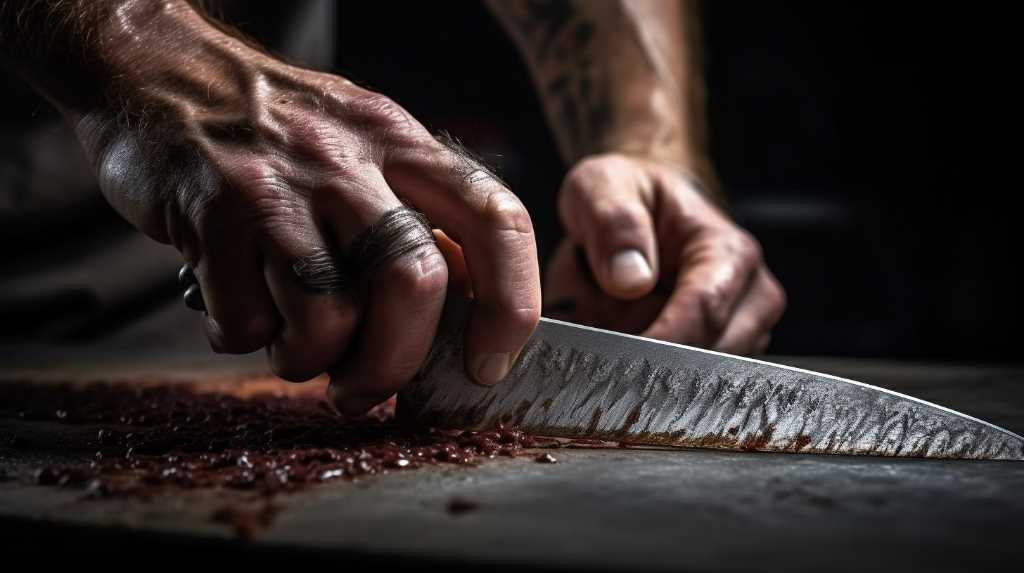
In order to ensure optimal performance, it is recommended to incorporate regular honing techniques into your maintenance routine for throwing knives, ideally every two to three weeks.
Honing is the process of realigning the knife's edge, which can become misaligned or dull over time. By honing regularly, you can maintain the sharpness and precision of your throwing knives, ensuring accurate and effective throws.
To hone your knives, you will need a honing rod or sharpening stone. Start by holding the rod or stone at a 20-degree angle to the knife's edge. With light pressure, slide the rod or stone along the edge, moving from the base to the tip of the blade. Repeat this process on both sides of the blade until you feel a slight resistance.
Regular honing will keep your throwing knives in optimal condition, allowing for consistent and successful throws.
Effective Sharpening Stones
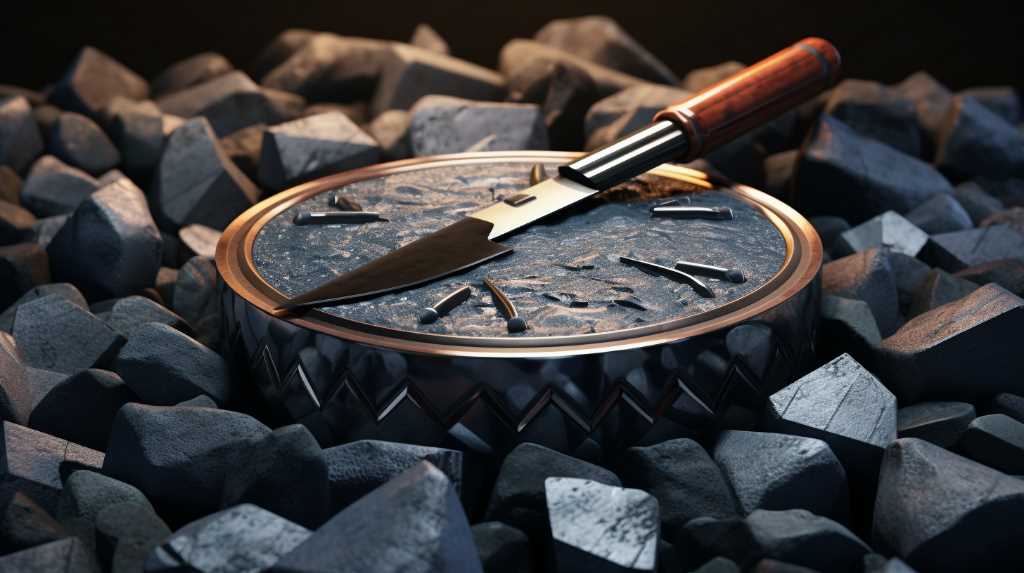
A variety of effective sharpening stones are available on the market, each offering unique features and benefits for maintaining a sharp edge on throwing knives. These sharpening stones are essential tools for any knife enthusiast or professional thrower who desires liberation from dull blades.
Here are four types of sharpening stones that are highly recommended:
- Diamond Stones: These stones are known for their durability and ability to remove metal quickly. They are ideal for repairing and reprofiling damaged edges.
- Water Stones: These stones are made from natural or synthetic materials and require soaking in water before use. They provide a smooth and precise sharpening experience, making them suitable for honing and refining the edge.
- Ceramic Stones: Ceramic stones are known for their hardness and ability to maintain their flatness. They are excellent for fine-tuning the edge and achieving a polished finish.
- Oil Stones: These stones are lubricated with oil before use, which helps to reduce friction and prevent heat buildup. Oil stones are versatile and can be used for both coarse and fine sharpening.
With these effective sharpening stones at your disposal, maintaining a sharp edge on your throwing knives becomes a breeze, allowing you to achieve optimal performance and accuracy.
Utilizing Ceramic Rods
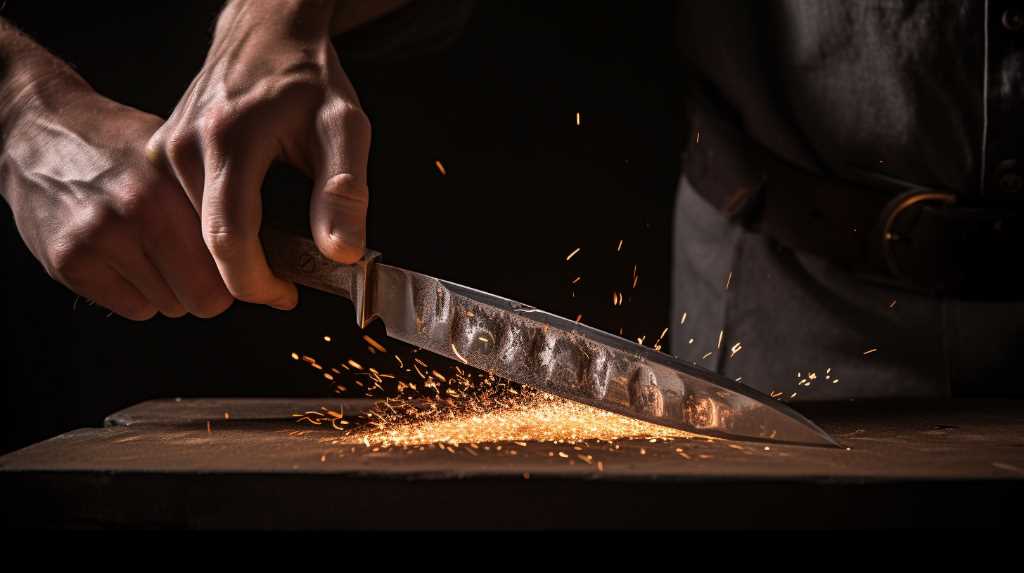
Ceramic rods offer a reliable and efficient method for maintaining the sharpness of throwing knives with their ability to finely hone and polish the blade's edge. These rods, made from high-quality ceramic materials, possess superior hardness and wear resistance, enabling them to effectively remove burrs and maintain a razor-sharp edge on throwing knives.
The smooth surface of the ceramic rods allows for precise control and consistent results during the sharpening process. Furthermore, ceramic rods are non-porous and do not absorb any moisture or oil, making them easy to clean and preventing contamination of the blade. This makes them an ideal choice for those seeking a hygienic and low-maintenance sharpening solution.
With their exceptional performance and convenience, ceramic rods are a must-have tool for anyone looking to keep their throwing knives in optimal condition.
Leather Strops for Knife Maintenance
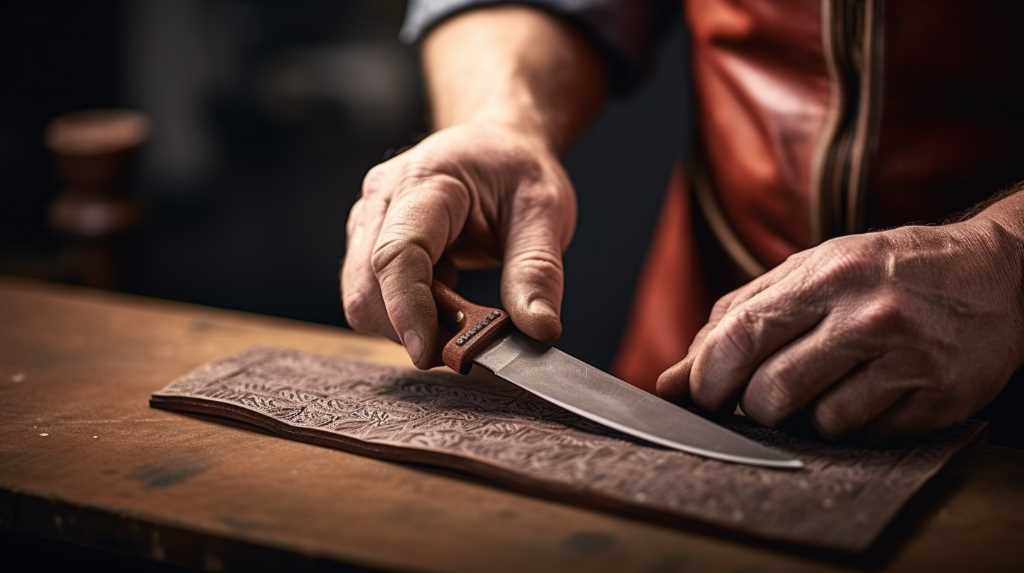
Several knife enthusiasts prefer using leather strops for knife maintenance as they provide a smooth and effective way to refine the edge of their blades. Leather strops offer several advantages over other methods of knife maintenance:
- Gentle abrasion: Leather strops are known for their ability to gently remove burrs and polish the edge of a knife without removing excessive amounts of metal. This ensures that the blade retains its original shape and sharpness.
- Versatility: Leather strops can be used with various types of abrasive compounds, such as diamond paste or chromium oxide, allowing users to customize the level of abrasiveness based on their preferences and the condition of the blade.
- Longevity: Properly cared for leather strops can last for years, making them a cost-effective option for knife maintenance.
- Portability: Leather strops are lightweight and compact, making them easy to carry and use in different locations, whether it's in the workshop or out in the field.
Overall, leather strops are a popular choice among knife enthusiasts due to their effectiveness, versatility, durability, and portability.
Importance of Angle Guides
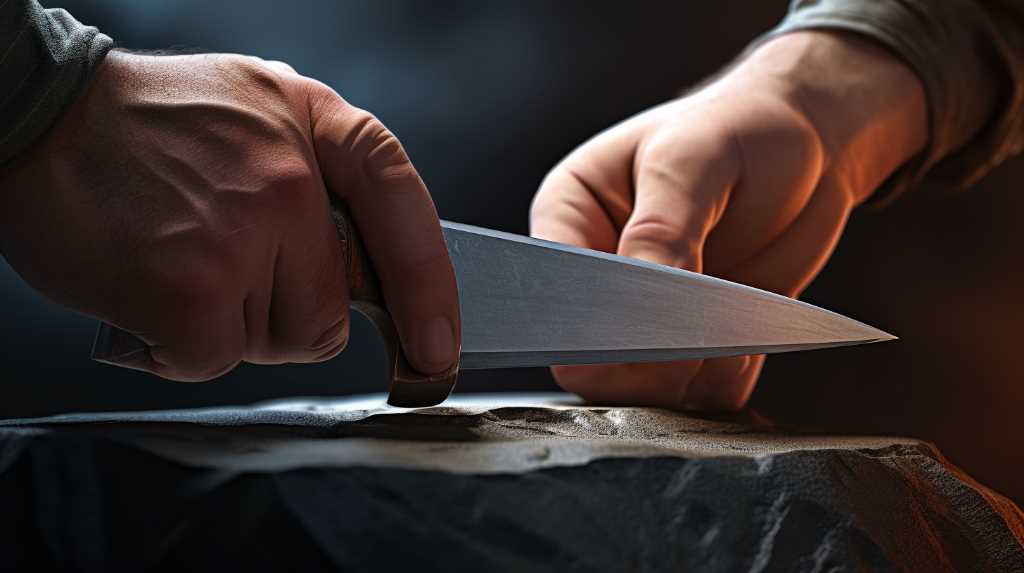
To ensure consistent and precise knife sharpening, it is essential to use angle guides in conjunction with leather strops.
Angle guides play a crucial role in maintaining the correct sharpening angle while using a knife. They are designed to hold the blade at a specific angle to the sharpening surface, ensuring uniformity and accuracy. By using angle guides, you can achieve a consistent edge on your knife, regardless of your experience level.
Leather strops, on the other hand, are used to refine and polish the edge after sharpening. They help remove any burrs or imperfections left behind by the sharpening process, resulting in a razor-sharp and smooth cutting edge.
When used together, angle guides and leather strops provide the necessary tools for achieving optimal knife performance and edge retention, giving you the freedom to tackle any cutting task with confidence and precision.
Frequently Asked Questions
Can Throwing Knives Be Sharpened Using Regular Honing Techniques?
Throwing knives can be sharpened using regular honing techniques, but it is important to consider the specific requirements of the knife. Factors such as the blade material, edge angle, and intended use should be taken into account to maintain the optimal edge.
What Are Some Alternative Options to Sharpening Stones for Maintaining the Edge on Throwing Knives?
Alternative options to sharpening stones for maintaining the edge on throwing knives include diamond-coated sharpening rods, ceramic sharpeners, and electric knife sharpeners. These tools offer convenience and efficiency in maintaining the optimal sharpness of throwing knives.
How Do Ceramic Rods Help in Maintaining the Edge on Throwing Knives?
Ceramic rods play a crucial role in maintaining the edge on throwing knives. Through their fine grit, they effectively remove burrs and restore sharpness. Their durability and precision make them an indispensable tool for knife enthusiasts.
Are Leather Strops Effective in Maintaining the Edge on Throwing Knives?
Leather strops are commonly used in knife maintenance. They are effective in maintaining the edge on throwing knives by providing a gentle abrasive surface for honing and polishing, resulting in a sharp edge that enhances accuracy and performance.
Why Is It Important to Use Angle Guides When Sharpening Throwing Knives?
Using angle guides when sharpening throwing knives is important because it ensures consistency and precision. By maintaining a consistent angle, the edge is sharpened evenly, enhancing the knife's performance and increasing accuracy during throwing.
Conclusion
In conclusion, maintaining the edge on throwing knives requires regular honing, effective sharpening stones, ceramic rods, leather strops, and angle guides.
These techniques and tools are crucial in ensuring that throwing knives remain sharp and accurate.
By consistently following these maintenance practices, throwers can enhance their performance and achieve optimal results.
As the saying goes, ‘A sharp knife is a thrower's best friend,' highlighting the importance of keeping throwing knives in top condition.

